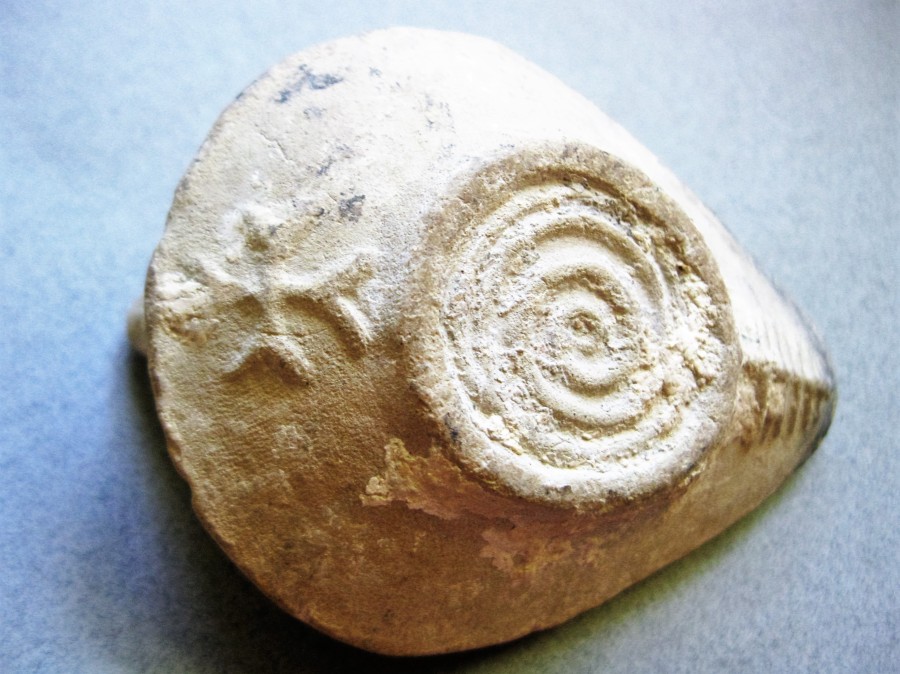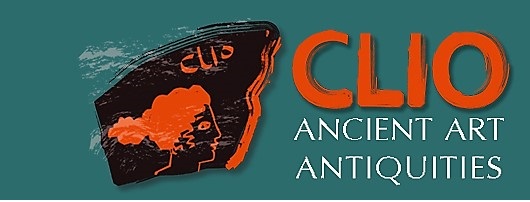
The simple pottery oil lamp illustrated above, while well preserved and displaying crisp molded decoration, may at first seem rather unremarkable. But a closer examination of its surface decoration, particularly the underside, and its form point to a specific period of cultural transition in the Levant (what is now Israel / Palestine, Lebanon and coastal Syria).
The lamp fits into a class that marks the transition from the predominantly Christian Byzantine Empire to the early days of the Islamic Empire under the first Caliphs. The Byzantine Levant had as its most important cities Damascus and Antioch in Syria and Jerusalem in Palestine. These territories had been Roman for four centuries before the last western Roman Emperor abdicated, leaving Constantinople as sole capitol of the Roman world. This split marks the transition to the Byzantine Empire. By the time Muslim armies invaded Syria and Palestine in the 630s AD, Byzantium had governed the region for another two hundred plus years. Exhausted by the endless struggles between Byzantium and the Sassanian Persian Empire over this region, neither of the great powers was prepared for the appearance of a new, fast moving foe out of the south. Damascus fell in 634 and Jerusalem in 637. After the conquest, the new Muslim government maintained the old Byzantine administrative system for a long while, and Greek remained the language of government for another fifty years. Conversion of the population to the new religion came slowly, and it was only after the Crusades of the late 11th to early 13th Centuries that the region became majority Muslim.
During the late 6th and early 7th Centuries, several types of pottery lamps in this region began to develop into the “slipper” shape of this lamp, a shape that would become typical of early Islamic pottery lamps. Well after the transition to the Islamic period, lamp makers seem to have made products for multiple types of clients, Muslim, Christian and Jewish. This lamp, which was almost certainly made shortly after the Muslim conquest, prominently displays on its underside two different Christian symbols. First, a large cross in relief at the rear, underneath the handle. Second, a large palm leaf running along the length of the underside from the base to just beneath the wick hole. The palm leaf had a long iconographic history in the ancient world and was easily adopted by early Christianity.


Readers interested in acquiring this well preserved and iconographically important object may do so on our Etsy site here – https://www.etsy.com/listing/466182264/a-byzantine-period-holy-land-pottery-oil?ref=shop_home_active_1
or on our Facebook site here – http://www.ebay.com/itm/A-Byzantine-Period-Holy-Land-Pottery-Oil-Lamp-with-Cross-Circa-AD-650-700-/131943357728?hash=item1eb86fdd20:g:jLMAAOSwLnBX3toi
